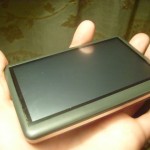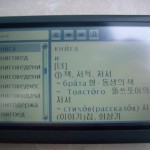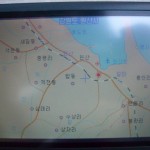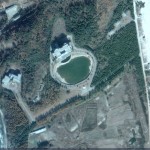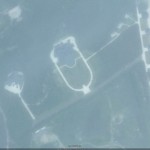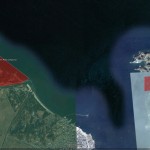The girl in the video looks like she’s about 12 years old. Thin, dirty and with a vacant look on her face, she tells the cameraman that she’s actually 23 and she survives by foraging for grass to sell to wealthier families for their rabbits.
The sobering footage was shot in June this year in the province of South Pyongan, North Korea, and provides a glimpse into the life of one person who lives far from the military parades and fireworks last month marking the 65th anniversary of the Workers’ Party of Korea.
It was shot on a cheap camera by a man who goes by the pseudonym Kim Dong-cheol, a North Korean with a double life. In addition to his job as a driver for a company, Kim also works as a clandestine reporter for AsiaPress, a Japanese news agency that’s taken advantage of the digital electronics revolution to get reports from inside North Korea.
AsiaPress works with six North Koreans they’ve trained as journalists. They’re given instruction in operating cameras, using PCs and how to use cell phones so they don’t attract the attention of authorities. Then, every few months, they meet with AsiaPress representatives just over the border in China to hand over their images.
“When we started training journalists in 2003 or 2004, getting cameras into North Korea was a real problem,” said Jiro Ishimaru, chief editor of the news agency, at a Tokyo news conference on Monday. “Nowadays, within North Korea you are able to have your pick of Sony, Panasonic or Samsung cameras.”
The material they produce is often startling and documents a side of the country the government doesn’t want the world to see.
In another clip also captured by Kim, a North Korean woman argues with a police man. Asked for a bribe, she screams at him and pushes him. “This cop is an idiot,” she shouts.
For most journalists, getting into North Korea is a tough task. Getting outside of the capital Pyongyang to see the lives of average people in the countryside is very difficult. Seeing the sort of poverty or disagreement with authority that Kim caught on camera is impossible.
Most of the shots are recorded surreptitiously and the small digital cameras make smuggling images easier than from older tape-based models.
“You used to have to tape video cassettes to your stomach,” he said. “But it’s very easy to hide an SD Card somewhere on your body.”
AsiaPress isn’t the only media working with reporters or informants in North Korea. Outlets including Open Radio for North Korea and Daily NK also receive reports from correspondents inside the country that add additional information, understanding and sometimes rumor to what’s happening inside the country.
The reports are typically sent via cell phones connected to a Chinese mobile network. Signals from Chinese cellular towers reach a few kilometers into North Korea and are difficult to monitor by the state’s telecom surveillance operation.
Recently, North Korean authorities have woken up to the flow of information across the border and are trying to stop it.
“The greatest headache I face is telecommunications,” Ishimaru said.
Mobile detection units patrol the border looking for signals from within North Korea and, if found, attempt to triangulate their source.
“The number of these units has been increasing, so if you spend a long time on the phone the police will come and search your house,” said Ishimaru. “People have become frightened of using the phone.”
If caught the punishment can be severe. Earlier this year a man faced a public firing squad after he was caught with a cell phone and admitted to supplying information to someone in South Korea, according to a report by Open Radio for North Korea.
The risk such reporters face leaves their agencies open to criticism that they are putting people in unnecessary danger, but Ishimaru said his reporters all want to provide a true picture of life inside North Korea to the rest of the world. He pays them between $200 and $300 per month.
The digital media revolution isn’t one way. It’s estimated that half of all young people in major cities have watched pirated South Korean TV dramas.
“Media around the world has gone digital and that’s also happened with North Korean propaganda,” said Ishimaru. “But even the wealthy and those in authority don’t want to watch propaganda films and movies about Kim Il-Sung and Kim Jong-Il. They want to watch something that’s more entertaining.”
The shows are recorded from South Korean satellite TV broadcasts in China and burned onto DVDs or Video CDs that soon make it over the border and into North Korean markets.
There are occasional crackdowns, but even the police want to watch the dramas.
“Although there are crackdowns and things are confiscated,” he said, “I don’t think there is anyway the leaders can put a stop to this.”

